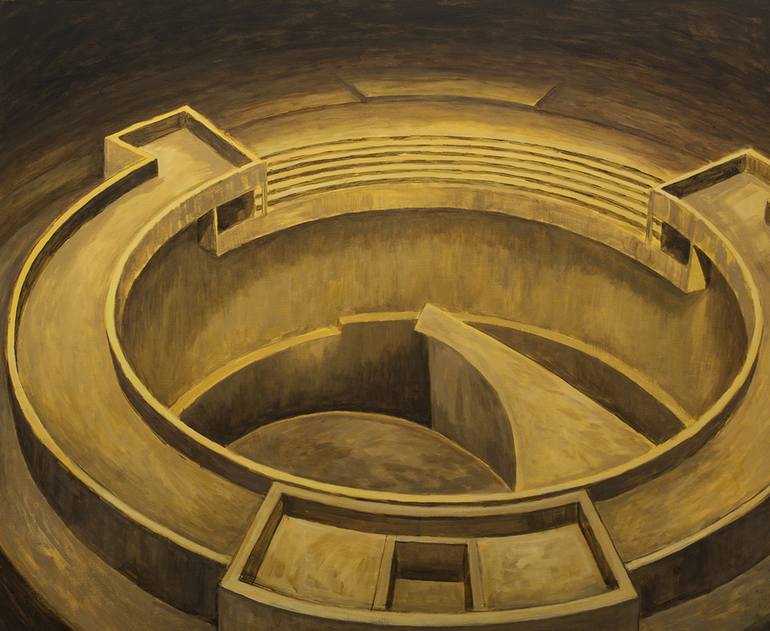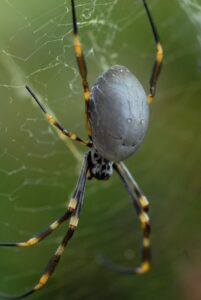On paper (or in this case on WordPress), biomimicry seems to encourage a more sustainable future founded on respect and appreciation for “life’s genius”. Biomimicry advocates support a new industrial revolution that centralizes biomimicry and claims to leave behind “the crude violence of Francis Bacon, the domination of nature-as-machine, and a history of toxic production processes that have given rise to a present and coming climate crisis”. However, when taking a closer look at the motivations, impacts, and patterns behind the biomimicry movement, some scholars believe the same capitalist and extractive patterns of the past will persevere. The same constant desire for progress and innovation that founded the Industrial Revolution is prevailing but this time with nature acting as a cheat sheet. In the 2014 article “Biomimicry: New Nature, New Enclosures”, professors Jesse Goldstein and Elizabeth Johnson explore biomimicry’s connection to the bioeconomy and the “production of ‘nature’ through well-worn logics of resource enclosure and privatization”.
leave behind “the crude violence of Francis Bacon, the domination of nature-as-machine, and a history of toxic production processes that have given rise to a present and coming climate crisis”. However, when taking a closer look at the motivations, impacts, and patterns behind the biomimicry movement, some scholars believe the same capitalist and extractive patterns of the past will persevere. The same constant desire for progress and innovation that founded the Industrial Revolution is prevailing but this time with nature acting as a cheat sheet. In the 2014 article “Biomimicry: New Nature, New Enclosures”, professors Jesse Goldstein and Elizabeth Johnson explore biomimicry’s connection to the bioeconomy and the “production of ‘nature’ through well-worn logics of resource enclosure and privatization”.
In this paper, Goldstein and Johnson define the bioeconomy as the “global circulation of biological materials and bio-based services” and the use of “biosciences as an engine of profit”. Biomimicry supports the bioeconomy by valuing non-human nature as an active subject of intellectual property. Instead of raw materials, nature becomes a collection of design concepts awaiting their forced privatization. This idea “creates the conditions for new forms of enclosure, making ever more aspects of the world- human and nonhuman alike- available to be churned through circuits of capital accumulation”. Like the broad term of “sustainability”, the authors identify biomimicry as a diverse field- so much so that it can be incoherent. Without conceptual bounds, there is significant room for anthropocentric mindsets to persist.
One of biomimicry’s foundational motivations is proving that economic growth and environmental stewardship can work together, reinforcing the monetization of nature’s intellect. Another is to identify humans as a part of nature rather than separate. The article, however, points out that key biomimicry advocates, like Janine Benyus, do not give up the division between nature and society. “Nature remains conceptualized as the ‘first nature’ of Enlightenment thought, a universal and extensive world ‘out there for human civilization to work on and through.” Biomimicry creates the opportunity for the development of a new natural hierarchy based on an organism’s ability to contribute to human innovation. A popular example in this article and a favorite of Janine Benyus is the female golden orb weaver (Tiny the spider). Tiny, who received her name from the biomimeticist (biomimicry scientist/engineer/innovator) Christopher Viney, “produces silk fiber that is, ounce for ounce, five times stronger than steel and 30% more flexible than nylon”. With locally derived inputs and no wasteful outputs, the production of this fiber is extremely useful and sustainable. The female spider is valued for its strong and flexible web as it can be applied to human design (such as clothing fabric). The spider is not valued for what it is but for what it does. On the bottom end of the hierarchy, Tiny’s male counterpart produces less durable fiber and is consequently overlooked by biomimetics.
Christopher Viney, “produces silk fiber that is, ounce for ounce, five times stronger than steel and 30% more flexible than nylon”. With locally derived inputs and no wasteful outputs, the production of this fiber is extremely useful and sustainable. The female spider is valued for its strong and flexible web as it can be applied to human design (such as clothing fabric). The spider is not valued for what it is but for what it does. On the bottom end of the hierarchy, Tiny’s male counterpart produces less durable fiber and is consequently overlooked by biomimetics.
By supporting the bioeconomy and capital accumulation, biomimicry creates new enclosures. The enclosure “prepares the conditions for wage-labor relations” and the privatization of surplus resources. In biomimicry’s case, there are 3.8 billion years of surplus nonhuman natural R&D waiting to be tapped by innovators and industries. Regulatory markets and the patenting of intellectual property enable the creation of a new frontier for accumulation comparable to that of the 17th century, identified as an agricultural improvement. “Then, as now, enclosure required a twofold transformation: first, a qualitative (intensive) one through which land was remapped as potential private property and, second, a quantitative (extensive) expansion of control over this newly produced terrain (Goldstein, 2013).” In replace of land for agricultural production, non-human nature becomes intellectual property for the purpose of “improving industrial processes without ever challenging our industrial agenda”.
Goldstein and Johnson point out that “it remains essential to identify- and critique- the ways in which life is routinely cast in economic terms, contributing to an impoverished future imaginary that is narrowly aligned with visions of technoscientific progress”. They expertly conclude that “biomimicry: though its stated intention is to learn from, respect and honor nature, by doing so through the available investment options for industrial R&D, the reproduction of life becomes intimately entangled with the reproduction of capital.” In other words, biomimetics must acknowledge biomimicry’s deep connection to the bioeconomy and recognize the many hypocrisies in existence, including that much of biomimicry discourse still frames humans as separate from nature. It is true that biomimicry is not extracting raw materials from nature, but it does extract intellectual property. With an essential motivation of this intellectual extraction to create a more sustainable future, what will be the unintended consequences of this new relationship between society and non-human nature? Though this article critiques the field of biomimicry, there is still great potential for it to have a positive impact on design and innovation. Gathering different scholarly perspectives can help to ensure that biomimicry is applied the way it is intended.
References:
- “Biomimicry: New Nature, New Enclosures” (2014) article by Jesse Goldstein and Elizabeth Johnson: journals.sagepub.com/doi/10.1177/0263276414551032
- “Sprider Silk is Stronger Than Steel.” (2020) article by Katherine J Wu: nytimes.com/2020/11/04/science/spider-silk-web-self-assembly.html
- australian.museum/learn/animals/spiders/golden-orb-weaving-spiders/ [orb weaving spider image]
- images.saatchiart.com/saatchi/994986/art/4668079/3737915-HSC00002-7.jpg [“Enclosure” painting by Marcus Jefferies]
*All quotes and written material above are sourced from “Biomimicry: New Nature, New Enclosures” by Jesse Goldstein and Elizabeth Johnson